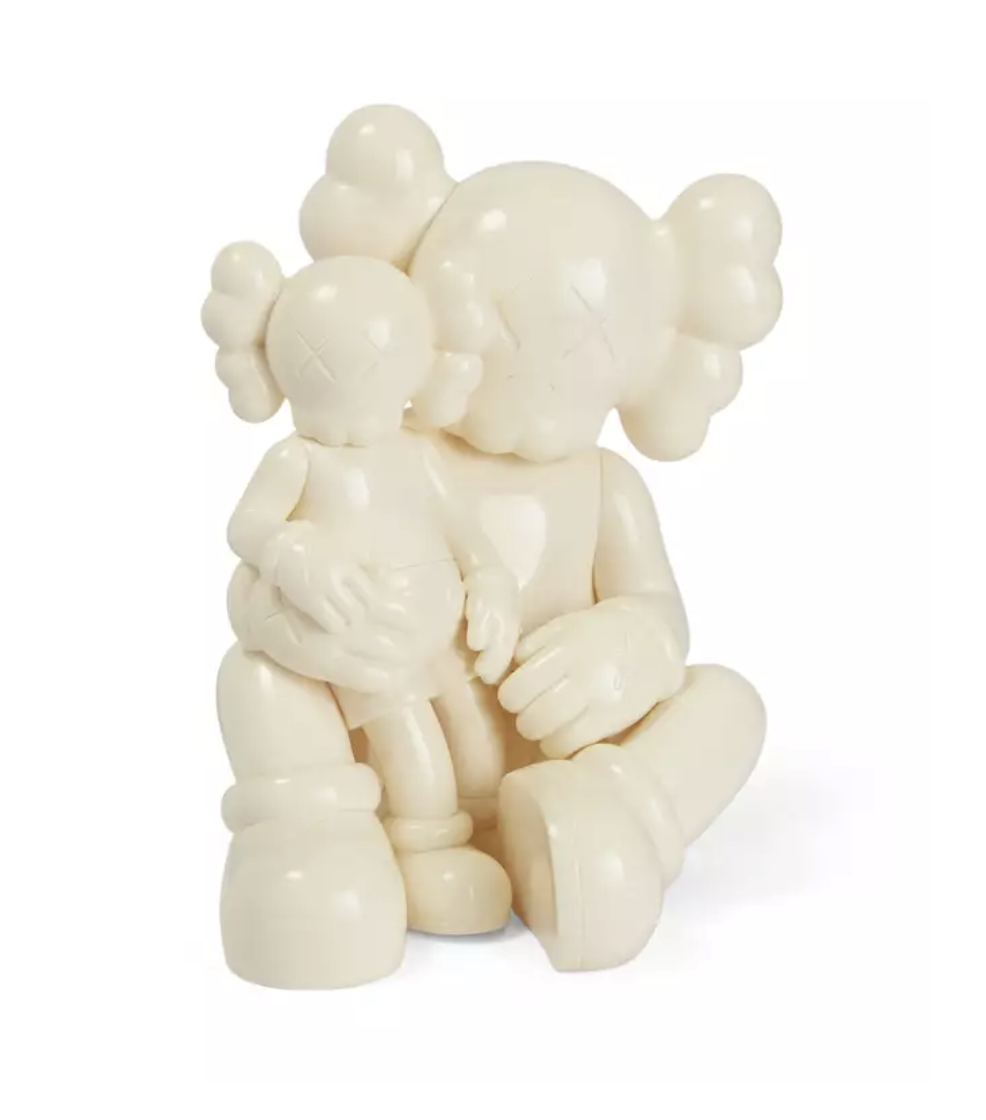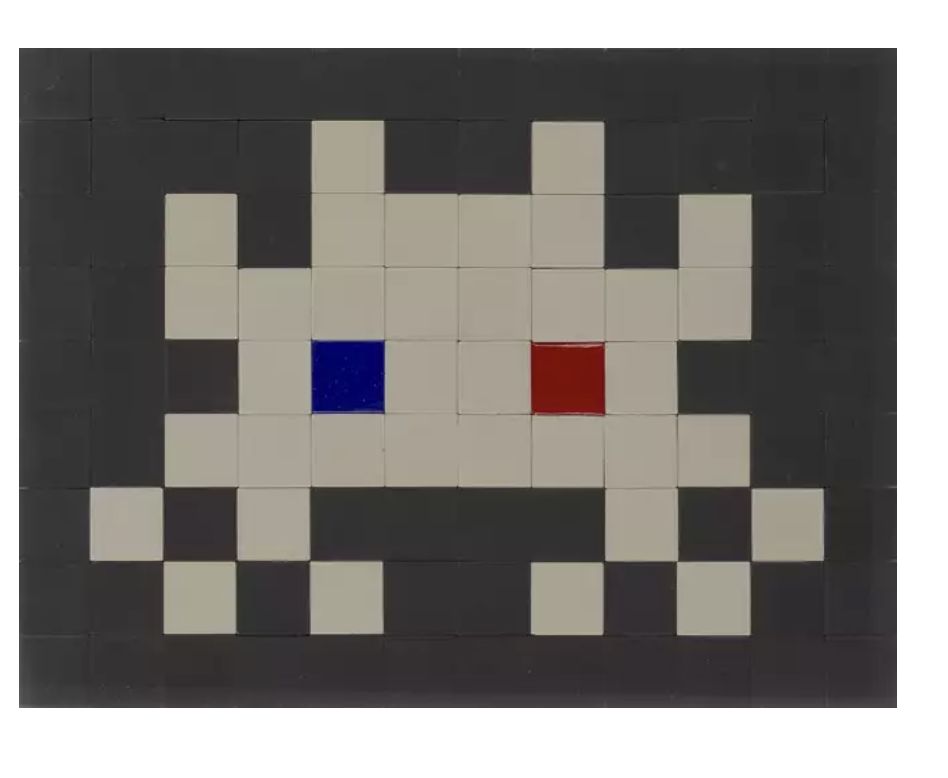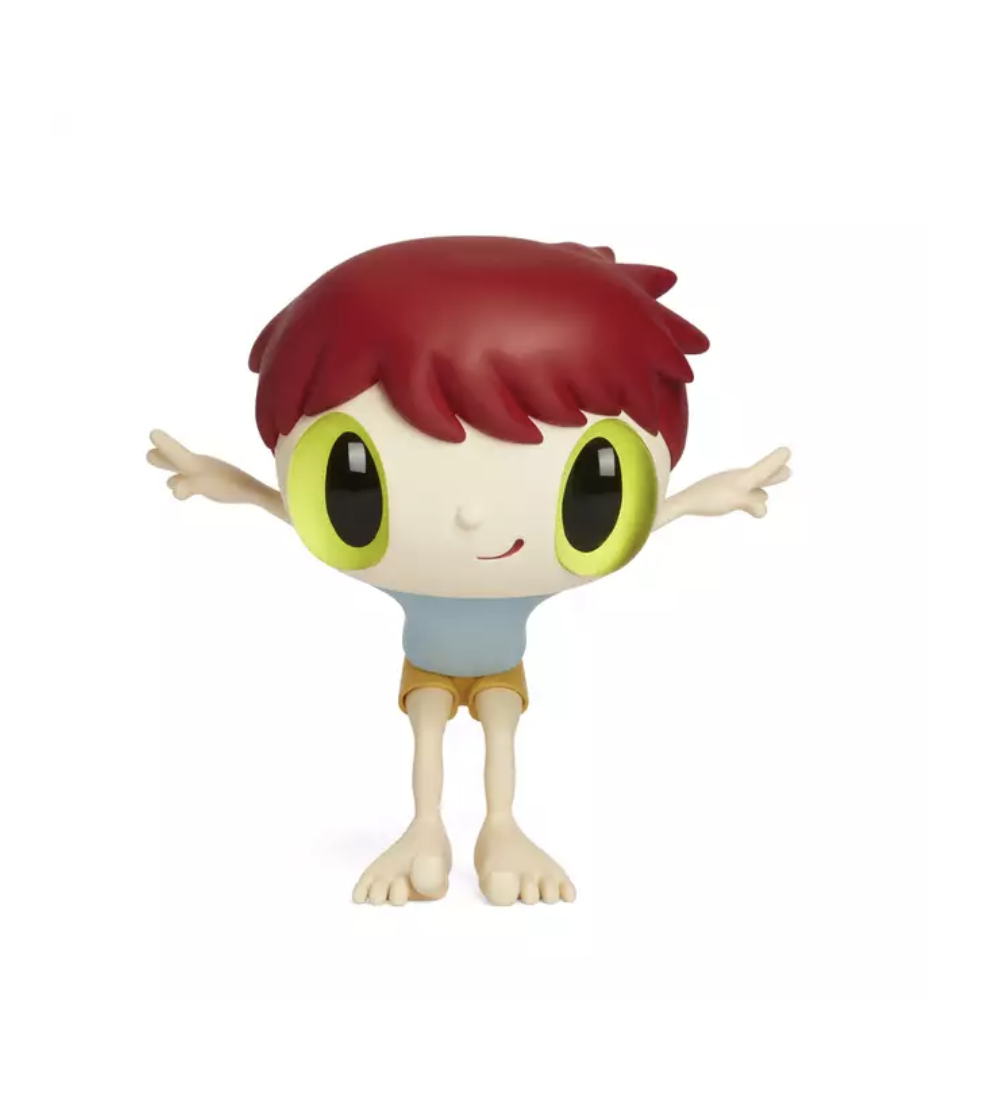Lot 300: KAWS,American b.1974- Holiday, Changbai Mountain, white, 2021
What is a Multiple?
The term ‘multiple’ is often described as a series of identical art objects produced by an artist, in limited or open editions, often carrying a unique number representing the edition size. Multiples are also defined by their three-dimensional mediums, ranging from plastic, to porcelain and glass, and are usually mass-produced with the intent of selling. In the 1950’s, the artists Jean Tinguely and Agam, wished to make their work more accessible and widely available, coming up with the idea of creating large, unlimited editions of works which could be sold at cheap prices. In 1962, the first multiples were produced by Denise René Gallery in Paris, and since then various artists have adopted this style of producing work.
Lot 556: Invader,French b.1969- Invasion Kit 14 (3D Vision), 2021
What to look out for?
Multiples come in all shapes and sizes, and there are a number of factors that affect their rarity and ultimately their value. Edition sizes vary greatly, with some multiples being produced in open editions whereby works are produced in a theoretically infinite number, rather than a predetermined limited run. Open editions are often the most accessible, because they are easy to come by and attain, and often lower in value. This makes open edition multiples a very good option for those wanting to own a work by a recognisable artist without having to stray into the world of limited-editions. Variations are where a lot of the buzz around limited edition multiples comes from; specially created in small numbers, small changes can make all the difference to the avid collector. Signatures, markings and colourway variation are just a few of the variables that affect how desirable a multiple can be.
Lot 67: Javier Calleja, Spanish b.1971- No Wings to Fly, 2023
Why should you start collecting?
Multiples are more often than not sculptural, and make for quirky and tactile objects. The stray away from the two-dimensional nature of printmaking can be liberating for artists, allowing them to design new and exciting forms. This variation in size, shape and colour can make for some very unique collections and displays. Some artists, such as KAWS have amassed huge followings through their production of multiples, and there exists many active communities based around collecting multiples. Excitement around new drops and limited edition runs keeps the process of collecting fresh and exciting, being constantly fuelled by new designs from the imaginations of some of the world’s most famous active artists e.g. Yoshitomo Nara and Yayoi Kusama. Multiples can prove to be a sound investment opportunity also, with demand for rare items growing ever greater, and the audience for decorative and collectable objects expanding with trends in fashion, art and design.







